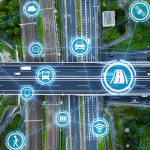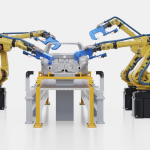Generative AI is reshaping how companies detect supply chain risks, evaluate supplier exposure, and simulate disruption scenarios. While the technology shows clear strategic promise, its real-world impact still depends on data quality, workflow integration, and organizational trust.
From Reactive Response to Predictive Resilience
Traditional supply chain risk management has long relied on backward-looking KPIs, supplier scorecards, and static contingency plans. Generative AI offers a sharper edge, drawing on machine learning to synthesize vast structured and unstructured data into dynamic risk signals. Unlike earlier rule-based systems, these models continuously learn from operational, financial, and contextual data sources, enabling more adaptive risk responses.
The real power lies in combining internal datasets (such as inventory positions or PO histories) with external signals, from weather alerts and commodity price shifts to real-time news and geopolitical chatter. Generative AI engines can scan thousands of variables simultaneously to detect faint signals before they escalate, flagging events like supplier instability, region-specific logistics disruptions, or policy volatility. According to BCG, early adopters of GenAI for supply chain have seen forecasting errors drop by up to 30% in complex categories such as electronics and raw materials.
Dynamic Risk Modeling Meets Supplier Intelligence
Generative AI is also elevating supplier risk assessments beyond basic compliance checks or financial ratios. By pulling in signals from ESG disclosures, enforcement actions, credit reports, and even facility-level labor violations, AI-generated supplier profiles are becoming more multidimensional. Companies like Dun & Bradstreet and Interos are already applying these models to generate real-time supplier risk indices, flagging threats ranging from bankruptcy risk to unethical sourcing practices.
Scenario simulation is another fast-maturing use case. Generative models can create sandbox environments to test the impact of shocks like port closures, cyberattacks, or sudden demand shifts. These simulations allow operations teams to explore “what-if” paths across global networks, stress-testing everything from nearshoring strategies to dual-sourcing setups. Some multinationals are using this capability to redesign safety stock buffers not by SKU type, but by scenario volatility profiles.
The Limits of Autonomous Risk Management
While generative AI is reframing the risk landscape, implementation hurdles remain. Model quality is only as good as data granularity and governance protocols. Poor master data, siloed systems, or lack of real-time feeds can easily distort risk scoring or drive false positives. Equally important is building operational trust, ensuring that AI-generated recommendations are auditable, explainable, and embedded within decision workflows, not simply surfaced on a dashboard.
Looking ahead, the integration of GenAI with control towers and procurement platforms will determine the depth of real-world impact. As Gartner notes, the future isn’t just about detecting risk, it’s about triggering autonomous mitigation steps like rebalancing orders, rerouting shipments, or preemptively approving supplier switches. That convergence of AI, automation, and orchestration will define the next era of risk-resilient supply chains.





